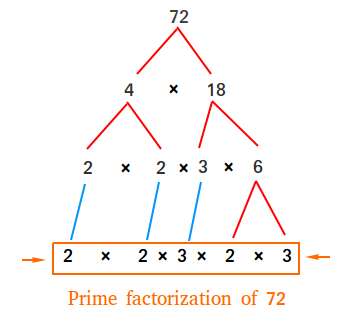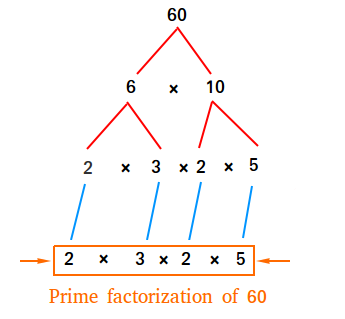Definition of prime factorization and examples
The prime factorization, also called complete factorization, of a composite number is a way of expressing the composite number as a product of its prime factors.
For example, the prime factorization of 6 is 2×3 since 2 and 3 are prime numbers.
You can make a factor tree when looking for the complete factorization of a number.
First, express the composite number as a product of two numbers. Then, continue to express each number as a product of two numbers until all numbers are prime numbers.
Prime factorization of 72 using a factor tree

Here is what we did to find the complete factorization of 72
1. Write 72 on top of the tree.
2. Choose any pair of factors for 72 as branches. If either of these factors is not prime, factor again. 4 and 18 were not prime numbers, so we factored again.
3. Choose a pair of factors for 4 and 18.
4 = 2×2 and 18 = 3×6
6 is composite, so we factor 6 again.
4. The last row at the bottom now has only prime factors.
You can also write the prime factorization of 72 as 23 × 32
Prime factorization of 60

You do not have to make a factor tree to find the prime factorization of a number. You can find the complete factorization of a number by doing the following.
72 = 2×36
= 2×2×18
= 2×2×2×9
= 2×2×2×3×3
60 = 2×30
= 2×2×15
= 2×2×3×5